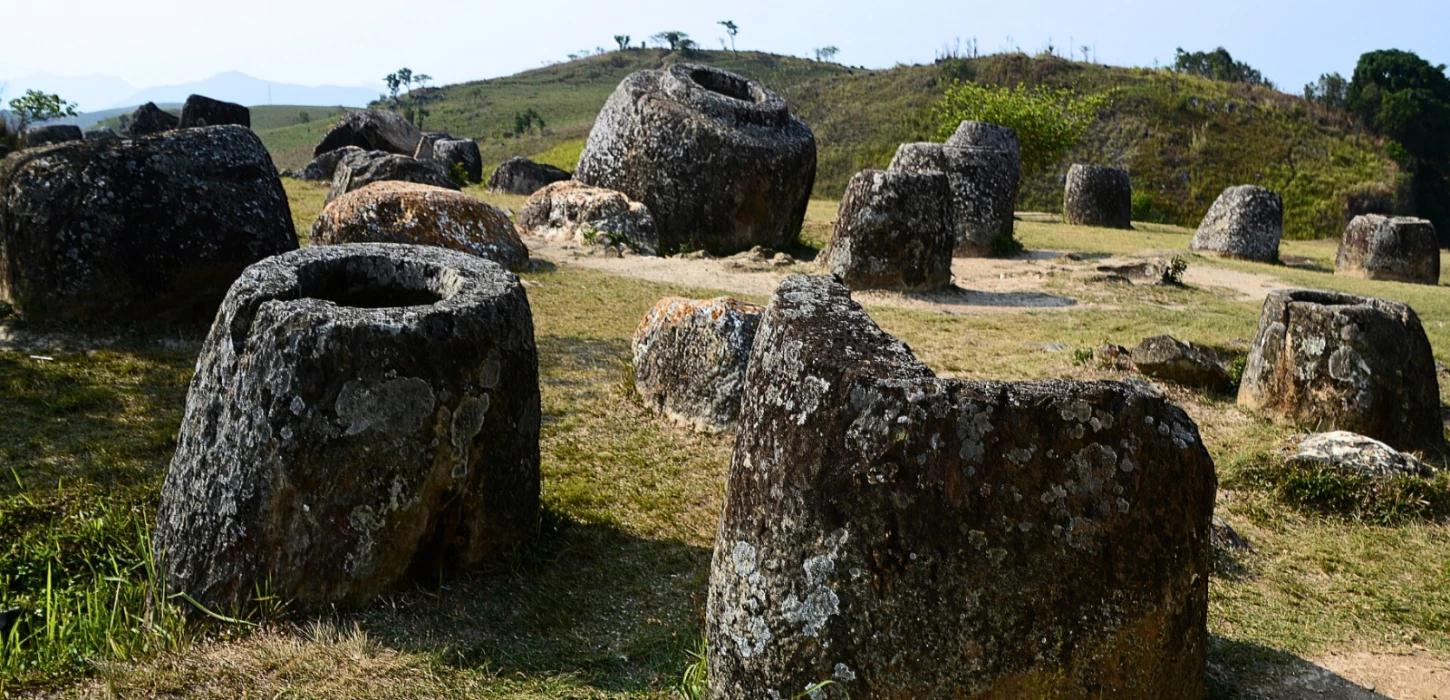Laos, often referred to as the "Land of a Million Elephants," is a country rich in history and spiritual heritage. From ancient temples and mysterious archaeological sites to French colonial architecture, Laos offers a treasure trove of cultural and religious landmarks. Here’s a guide to some of the most significant historical and religious sites in this enchanting country.
1. Luang Prabang - UNESCO World Heritage Site
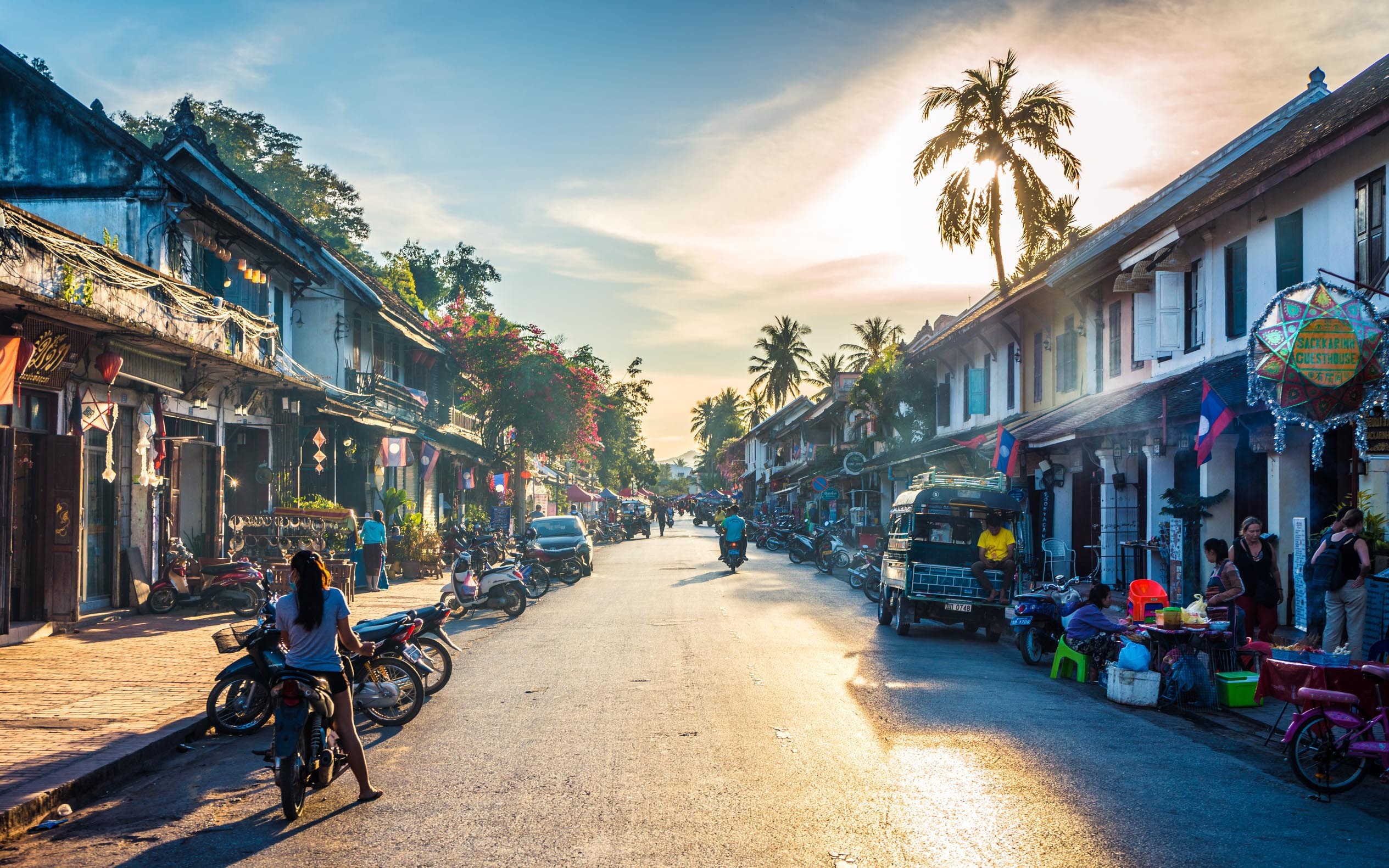
Luang Prabang, a UNESCO World Heritage Site since 1995, is renowned for its well-preserved architectural, religious, and cultural heritage. Nestled at the confluence of the Mekong and Nam Khan rivers, this charming town is home to numerous Buddhist temples and colonial buildings.
Highlights:
- Wat Xieng Thong: This 16th-century temple complex is a masterpiece of Lao architecture, featuring intricately carved and gilded structures.
- Royal Palace Museum: Once the residence of the Lao royal family, it now houses artifacts and exhibits that offer insights into the country’s history.
- Wat Mai Suwannaphumaham: Known for its gold bas-relief work, this temple played a significant role in Lao Buddhism and royalty.
2. Pha That Luang (Vientiane) - National Symbol of Laos
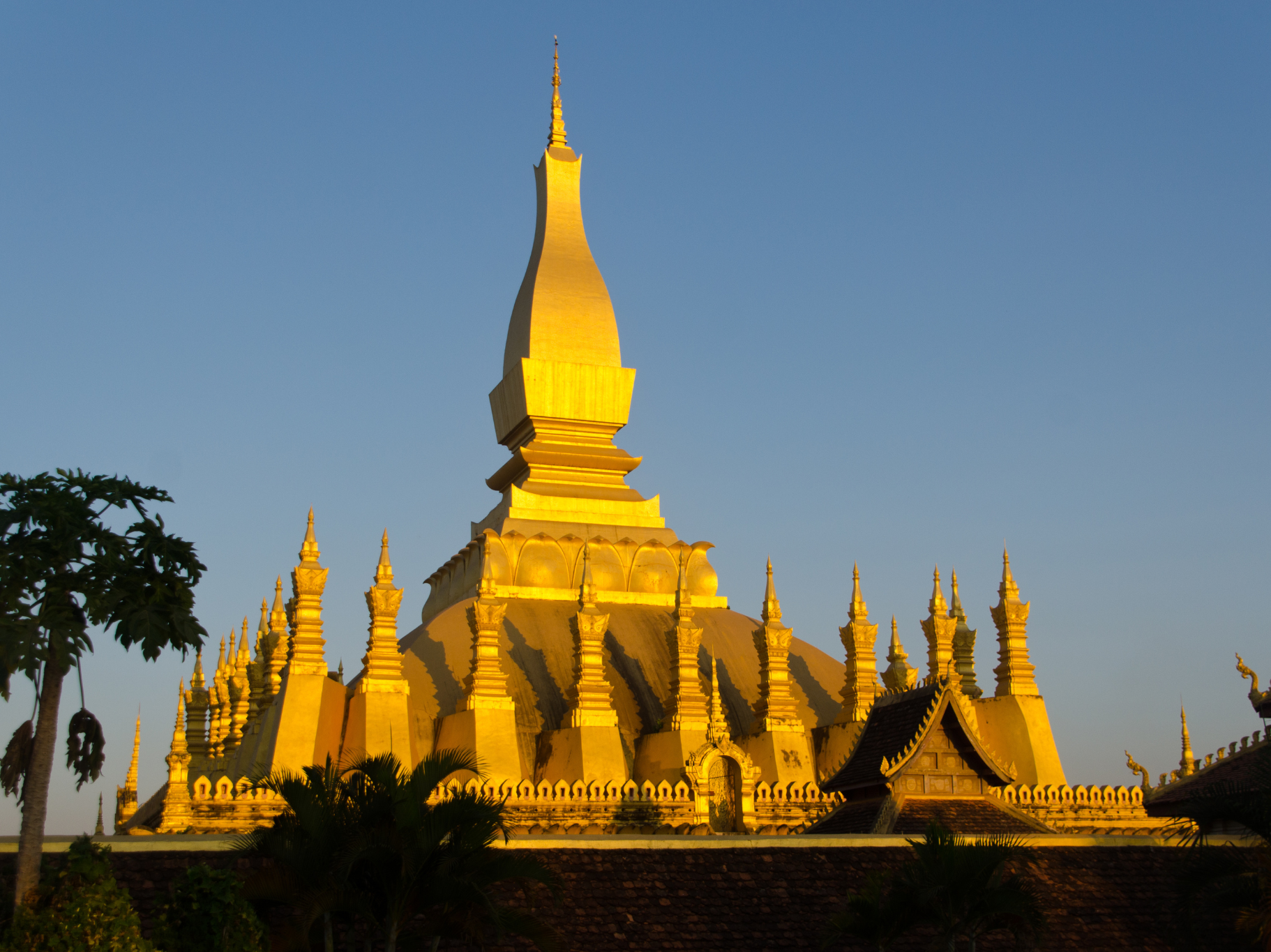
Pha That Luang, or the Great Stupa, is the most important national monument in Laos and a symbol of Lao sovereignty and Buddhism. Located in the capital city of Vientiane, it is a significant pilgrimage site for Buddhists.
Highlights:
- Architecture: The stupa is covered in gold leaf and is believed to contain a relic of the Buddha.
- Festivals: The annual That Luang Festival in November draws pilgrims from all over Laos and beyond, featuring religious ceremonies, processions, and cultural performances.
3. Vat Phou (Champasak) - Ancient Khmer Temple Complex

Vat Phou, a pre-Angkorian temple complex in Champasak Province, is a UNESCO World Heritage Site. It dates back to the 5th century and was originally dedicated to the Hindu god Shiva before becoming a Buddhist site.
Highlights:
- Temple Structures: The complex includes temples, shrines, and waterworks that demonstrate ancient engineering skills.
- Scenic Location: The site is set against the backdrop of Phou Kao Mountain, adding to its mystical allure.
- Annual Festival: The Vat Phou Festival in February features traditional music, dance, and religious ceremonies.
4. Plain of Jars (Xieng Khouang) - Mysterious Archaeological Site
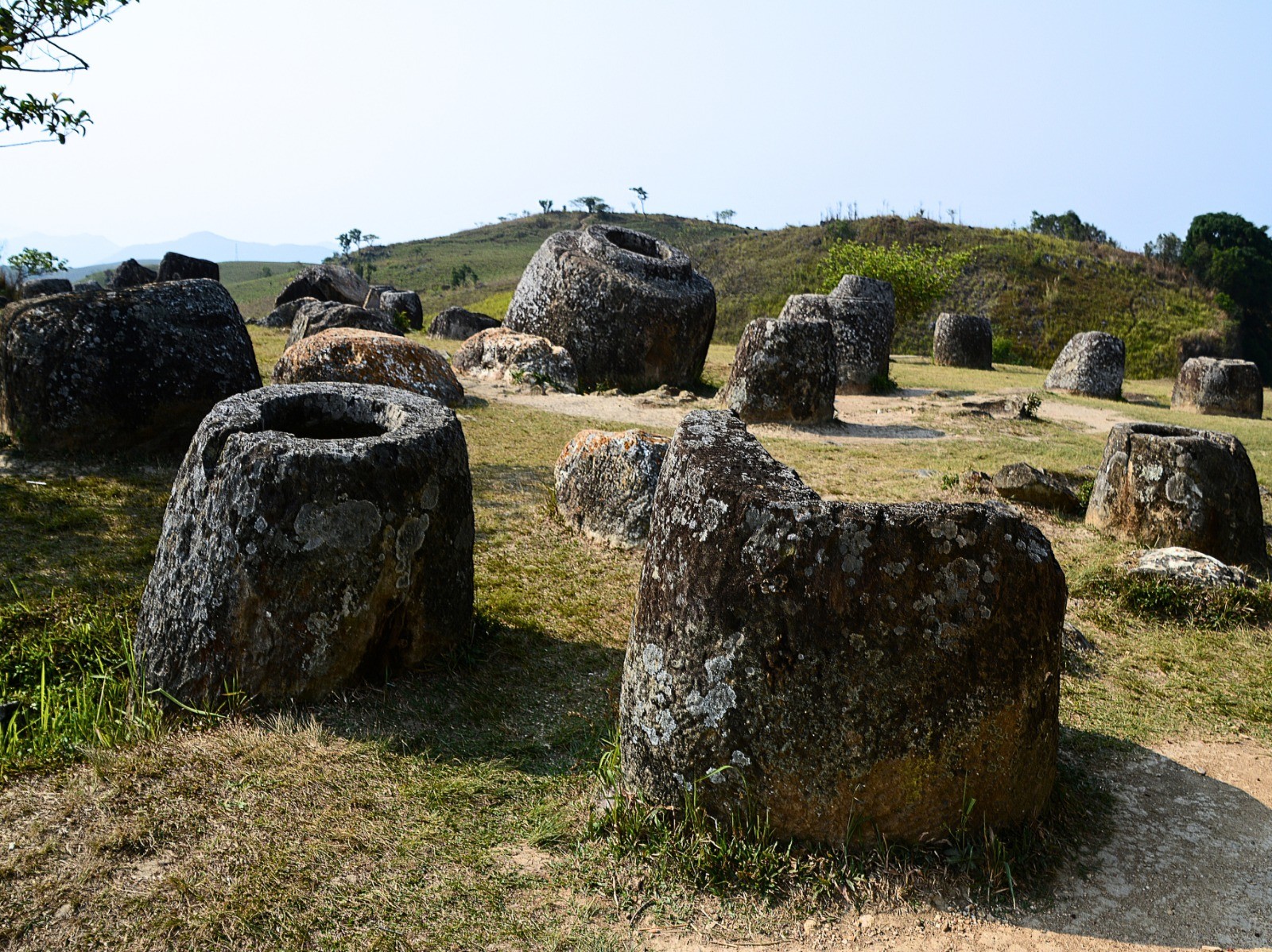
The Plain of Jars is one of the most intriguing archaeological sites in Southeast Asia, consisting of thousands of large stone jars scattered across the landscape. Their purpose and origins remain a mystery, though they are believed to be associated with ancient burial practices.
Highlights:
- Site 1 (Thong Hai Hin): The largest and most accessible site, featuring the biggest jars.
- Historical Significance: The jars date back to the Iron Age (500 BCE to 500 CE) and offer insights into the region’s ancient civilizations.
- Visitor Center: Provides information on the history and ongoing research about the jars.
5. Buddha Park (Xieng Khuan) - Unique Sculpture Park
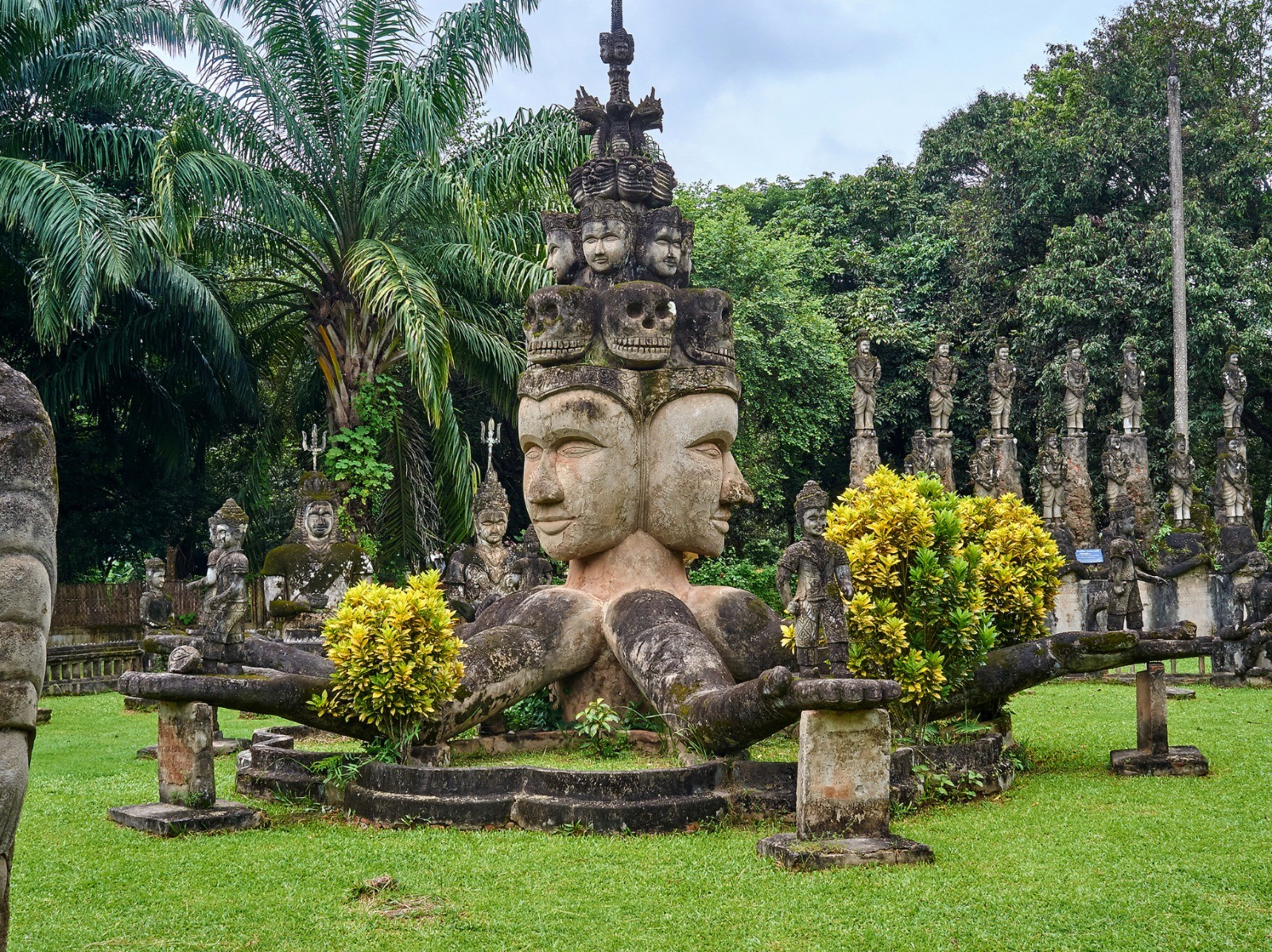
Buddha Park, located 25 kilometers southeast of Vientiane, is a fascinating sculpture park filled with over 200 Hindu and Buddhist statues. Created in 1958 by Luang Pu Bunleua Sulilat, the park blends religious themes with surreal artistry.
Highlights:
- Reclining Buddha: One of the most prominent sculptures, it stretches 40 meters long.
- Giant Pumpkin: Visitors can enter this three-story sculpture representing Hell, Earth, and Heaven.
- Artistic Fusion: The park is a unique blend of religious symbolism and eccentric creativity.
6. Wat Phu Si (Luang Prabang)—Temple on the Hill
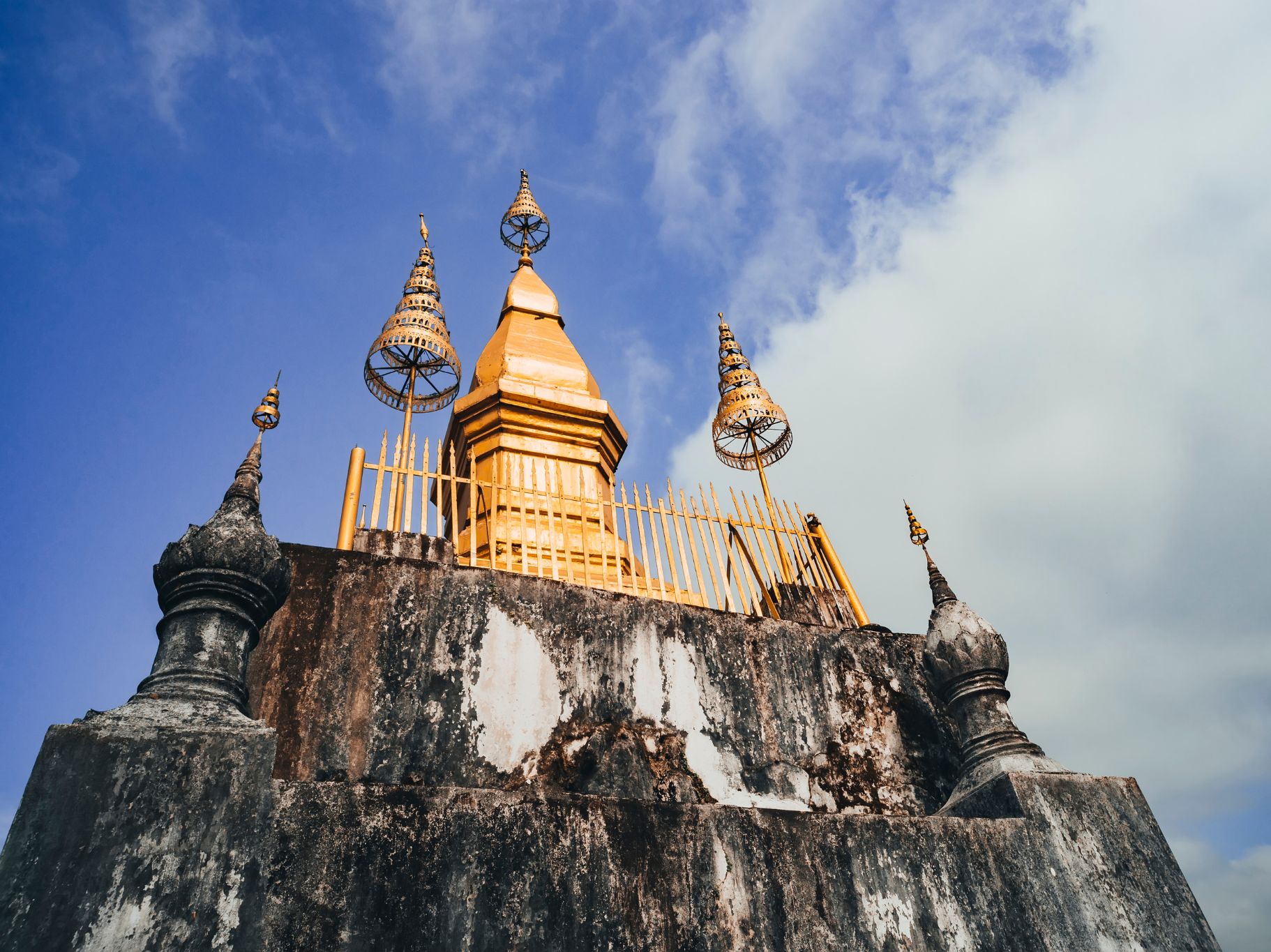
Wat Phu Si, located on Mount Phou Si in Luang Prabang, offers panoramic views of the town and the Mekong River. The climb up the 328 steps is rewarded with breathtaking vistas and serene temple grounds.
Highlights:
- That Chomsi Stupa: A golden stupa at the summit, visible from many parts of the town.
- Caves and Shrines: Along the path, there are several small shrines and Buddha statues, adding to the spiritual journey.
Conclusion
Laos’ historical and religious sites offer a deep dive into the country’s rich cultural tapestry and spiritual traditions. From ancient temples and mysterious jars to grand stupas and unique sculpture parks, each site tells a story of the country’s past and its enduring cultural heritage. Whether you're exploring the ancient streets of Luang Prabang or the enigmatic Plain of Jars, these sites provide a fascinating glimpse into the soul of Lao.

